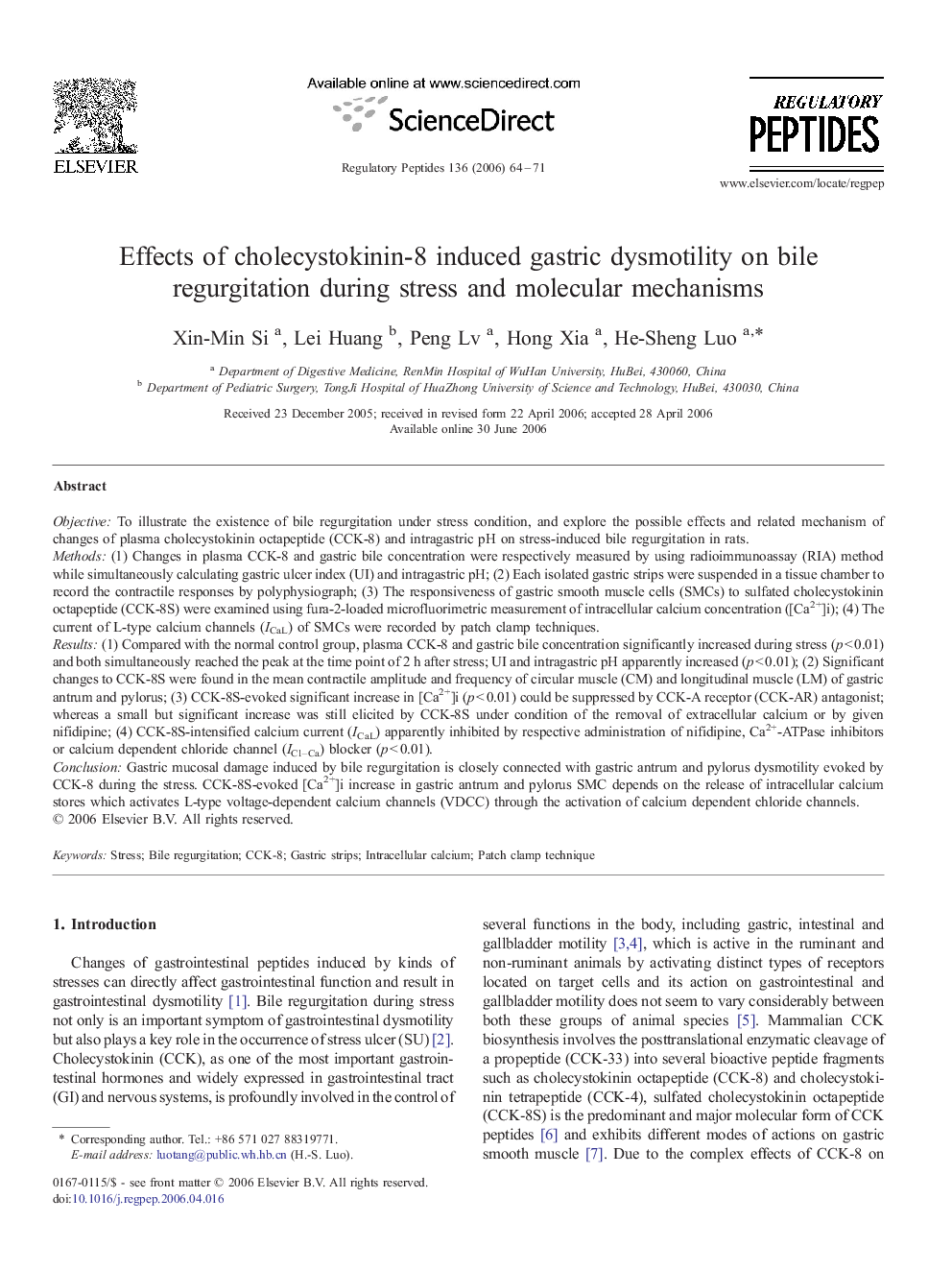| Article ID | Journal | Published Year | Pages | File Type |
|---|---|---|---|---|
| 2023484 | Regulatory Peptides | 2006 | 8 Pages |
ObjectiveTo illustrate the existence of bile regurgitation under stress condition, and explore the possible effects and related mechanism of changes of plasma cholecystokinin octapeptide (CCK-8) and intragastric pH on stress-induced bile regurgitation in rats.Methods(1) Changes in plasma CCK-8 and gastric bile concentration were respectively measured by using radioimmunoassay (RIA) method while simultaneously calculating gastric ulcer index (UI) and intragastric pH; (2) Each isolated gastric strips were suspended in a tissue chamber to record the contractile responses by polyphysiograph; (3) The responsiveness of gastric smooth muscle cells (SMCs) to sulfated cholecystokinin octapeptide (CCK-8S) were examined using fura-2-loaded microfluorimetric measurement of intracellular calcium concentration ([Ca2+]i); (4) The current of L-type calcium channels (ICaL) of SMCs were recorded by patch clamp techniques.Results(1) Compared with the normal control group, plasma CCK-8 and gastric bile concentration significantly increased during stress (p < 0.01) and both simultaneously reached the peak at the time point of 2 h after stress; UI and intragastric pH apparently increased (p < 0.01); (2) Significant changes to CCK-8S were found in the mean contractile amplitude and frequency of circular muscle (CM) and longitudinal muscle (LM) of gastric antrum and pylorus; (3) CCK-8S-evoked significant increase in [Ca2+]i (p < 0.01) could be suppressed by CCK-A receptor (CCK-AR) antagonist; whereas a small but significant increase was still elicited by CCK-8S under condition of the removal of extracellular calcium or by given nifidipine; (4) CCK-8S-intensified calcium current (ICaL) apparently inhibited by respective administration of nifidipine, Ca2+-ATPase inhibitors or calcium dependent chloride channel (ICl–Ca) blocker (p < 0.01).ConclusionGastric mucosal damage induced by bile regurgitation is closely connected with gastric antrum and pylorus dysmotility evoked by CCK-8 during the stress. CCK-8S-evoked [Ca2+]i increase in gastric antrum and pylorus SMC depends on the release of intracellular calcium stores which activates L-type voltage-dependent calcium channels (VDCC) through the activation of calcium dependent chloride channels.
